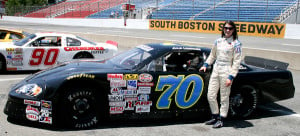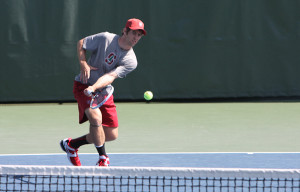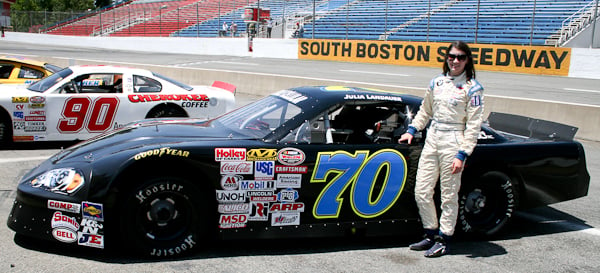For many Stanford student-athletes, following their dreams into professional sports means making sacrifices. In particular, they must juggle a demanding academic schedule and an accelerating athletic career.

Many student-athletes make plans to graduate early or alter their schedules in order to pursue Olympic dreams or a professional sports career. Some athletes have to plan alternative class schedules — within University requirements — to accommodate their professional sports schedules. These strains are especially prominent this spring, with several Stanford students selected in the late-April NFL draft and participating in the upcoming summer Olympics, along with other professional sports.
Julia Landauer ‘14, a hopeful professional racecar driver, finished up her sophomore year early this past week in order to “pursue a racing opportunity” that she declined to disclose to The Daily.
Landauer arranged to finish the 10-week spring quarter in less than six weeks by her own initiative.
“Since about winter break, I started contacting professors and looking into the curriculum to see if there were any classes I could take where the teachers would also work with me,” Landauer said. “I could only take classes with final papers and presentations so I wouldn’t break the Honor Code by taking finals early.”
Kristina Vaculik ‘14, who will try out for the Canadian women’s gymnastics team in June, had to miss time to compete almost immediately after arriving at the Farm.
Vaculik missed three weeks of the fall quarter of her freshman year to compete in the World Championships. When she arrived back at Stanford, it was just in time for the first round of midterms.
The Canadian women’s gymnastics team qualified for the 2012 Summer Olympics in London, and Vaculik chose to defer her sophomore year at Stanford and return home to train full-time.
“I’ve always wanted to go to the Olympics,” Vaculik said. “That’s why I planned out my academics and my sport the way I did.”
Like Vaculik, many Olympic hopefuls arrange to take time away from Stanford to train or compete in addition to altering their schedules.
Among them is Maria Koroleva ‘12, who will be a member of the U.S. women’s Olympic synchronized swim team.
Since joining the U.S. national team in 2007, Koroleva has spent her summers living and practicing with the team. This past year, she chose to postpone her graduation date, which would have been this June, to take the year away from classes to train full-time.
“For synchro, you have to train with the team,” Koroleva said. “This year, the training location was in Indianapolis, so if you want to be on the team, you have to move.”
After the Olympics, Koroleva plans to return to Stanford and graduate with a communication major.
As difficult as it may be to handle a vigorous academic schedule and life as an athlete, the quarter system helps some athletes.
Senior No. 1 tennis player Bradley Klahn used it to his advantage at the onset of his junior year when he began working with his advisers at the Athletic Academic Resource Center (AARC).
For his final five quarters, Klahn shouldered a heavy academic schedule and stored up enough units to graduate with an economics major this past winter quarter and focus on tennis this spring.
“There’s no shortcut for athletes,” Klahn said. “It’s difficult for us, no question. Every student-athlete is intelligent and capable of handling the rigors of balancing both [school and sports]. “
Klahn is looking to become a professional tennis player after he completes his final season with the Stanford tennis team.
Many athletes said they find it difficult to work with professors to find courses that both count toward a degree and fit into a professional athlete’s schedule, which can vary widely depending on the sport.
Landauer said she had to start planning early to find a plausible schedule with her professors.
“They appreciated the responsibility I was taking with my activities, and I found three [classes] that worked for me and counted towards my major,” she said. “So I got pretty lucky with that one.”
Landauer said she has found her sport and academic pursuits complementary. Majoring in Science, Technology and Society (STS), Landauer plans to apply her degree toward racing.

“I’ll be able to tell by the time I’m 25 or 26 if it looks like I’ll make it or not,” Landauer continued. “If so, fantastic! If not, I’ll utilize the skills I’ve learned at Stanford and from my Julia Landauer Racing brand development to go into the racing industry.”
Many athletes agreed that the scheduling conflicts made their passion for their athletics even more apparent.
Molly Kinsella ‘12, who is training for the U.S. women’s rugby team following the Stanford team’s national championship loss this weekend, is well aware of this reality. After her sophomore year, she made the switch from being a varsity track and field thrower to play lock on the Stanford women’s rugby team.
“I think the culture is nice,” Kinsella said in reference to rugby. “The people who want to be there are there, and I think that makes those few hours a lot more valuable.”
Kinsella said that USA Rugby expects its players to take responsibility and commence the training for the program on their own.
“They [USA Rugby] are trying to do something new,” Kinsella said. “It’s called Eagle 365, and the idea is that you live every day of your life with this goal of going to the World Cup in 2014. They give you strength and conditioning workouts, nutritionist access, mental imagery and a whole binder of information. The idea is really trying to make it workable for athletes.”
The USA Rugby team and the Eagle 365 program are more independent than many programs, but most professional sports programs present huge time management difficulties to students.
“It’s challenging, but definitely well worth it,” Klahn said of balancing school and tennis.
Likewise, Landauer said she is willing to make accommodations in the future to continue with racing.
“The goal is to be able to make a living from driving a race car, whether it be in stock cars, formula cars, sports cars, production cars [or] sprint cars,” Landauer said.
“Even school buses,” she added, jokingly.
